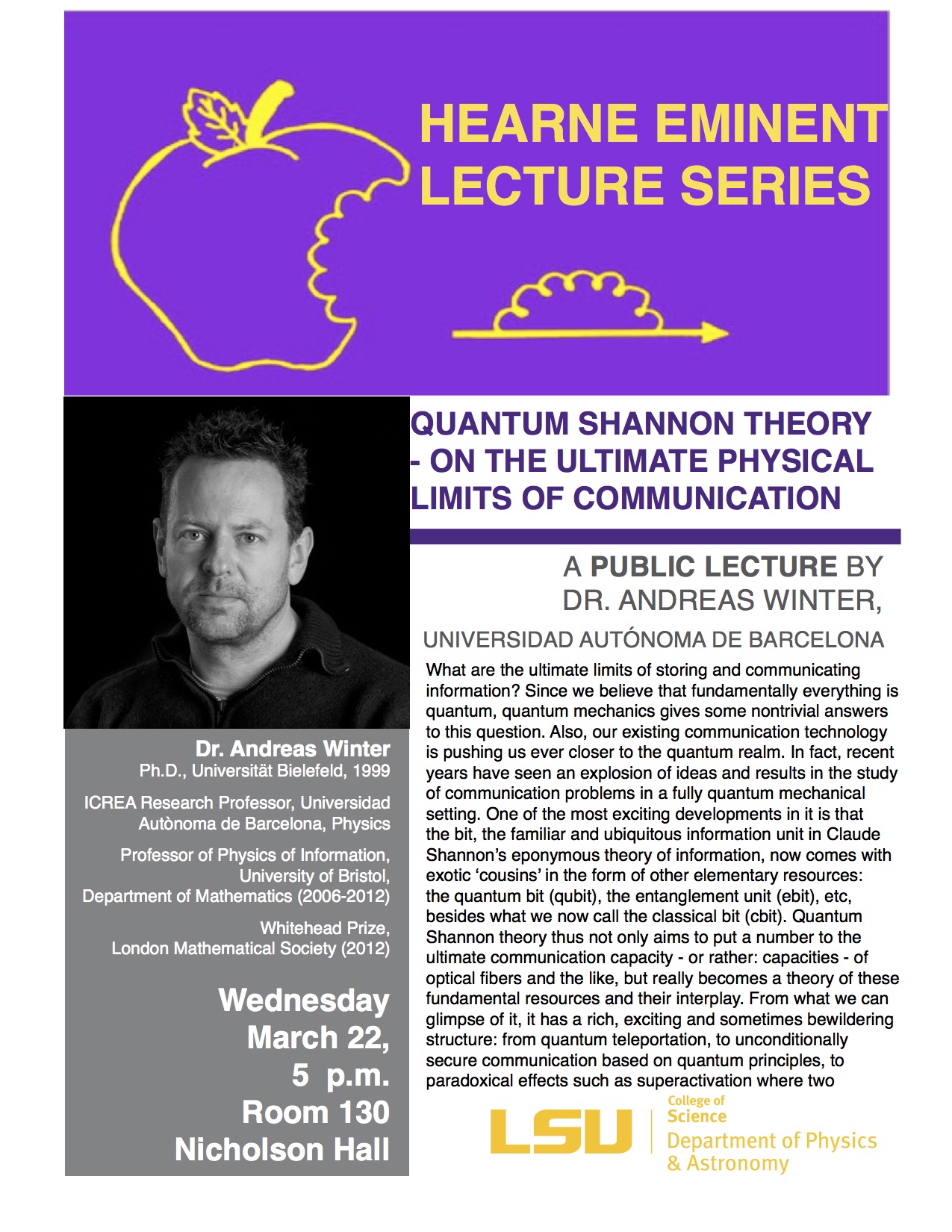Quantum Shannon Theory - On the ultimate physical limits of communication
Universidad Autónoma de Barcelona
 What are the ultimate limits of storing and communicating information? Since we believe
that fundamentally everything is quantum, quantum mechanics gives some nontrivial
answers to this question. Also, our existing communication technology is pushing us
ever closer to the quantum realm. In fact, recent years have seen an explosion of
ideas and results in the study of communication problems in a fully quantum mechanical
setting. One of the most exciting developments in it is that the bit, the familiar
and ubiquitous information unit in Claude Shannon's eponymous theory of information,
now comes with exotic 'cousins' in the form of other elementary resources: the quantum
bit (qubit), the entanglement unit (ebit), etc, besides what we now call the classical
bit (cbit). Quantum Shannon theory thus not only aims to put a number to the ultimate
communication capacity - or rather: capacities - of optical fibers and the like, but
really becomes a theory of these fundamental resources and their interplay. From what
we can glimpse of it, it has a rich, exciting and sometimes bewildering structure:
from quantum teleportation, to unconditionally secure communication based on quantum
principles, to paradoxical effects such as superactivation where two communication
links, each of which cannot transmit quantum information, together can achieve this
perfectly.
What are the ultimate limits of storing and communicating information? Since we believe
that fundamentally everything is quantum, quantum mechanics gives some nontrivial
answers to this question. Also, our existing communication technology is pushing us
ever closer to the quantum realm. In fact, recent years have seen an explosion of
ideas and results in the study of communication problems in a fully quantum mechanical
setting. One of the most exciting developments in it is that the bit, the familiar
and ubiquitous information unit in Claude Shannon's eponymous theory of information,
now comes with exotic 'cousins' in the form of other elementary resources: the quantum
bit (qubit), the entanglement unit (ebit), etc, besides what we now call the classical
bit (cbit). Quantum Shannon theory thus not only aims to put a number to the ultimate
communication capacity - or rather: capacities - of optical fibers and the like, but
really becomes a theory of these fundamental resources and their interplay. From what
we can glimpse of it, it has a rich, exciting and sometimes bewildering structure:
from quantum teleportation, to unconditionally secure communication based on quantum
principles, to paradoxical effects such as superactivation where two communication
links, each of which cannot transmit quantum information, together can achieve this
perfectly.
